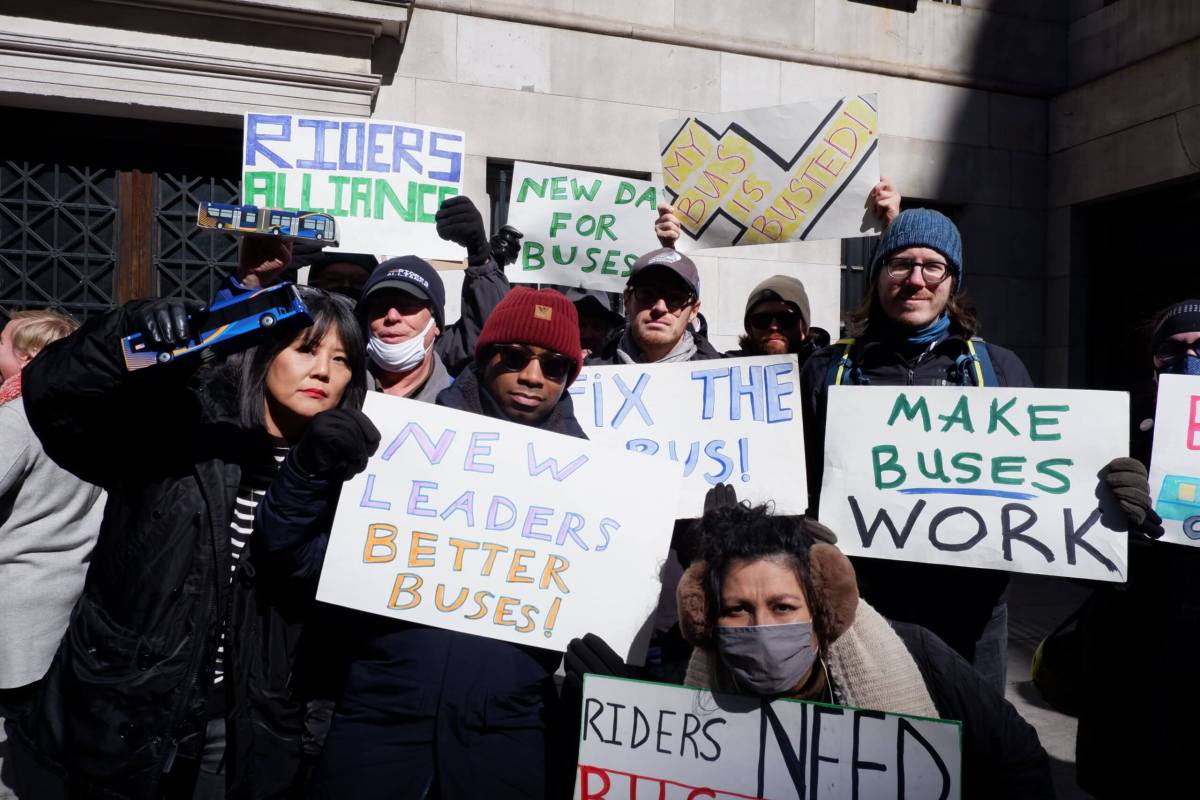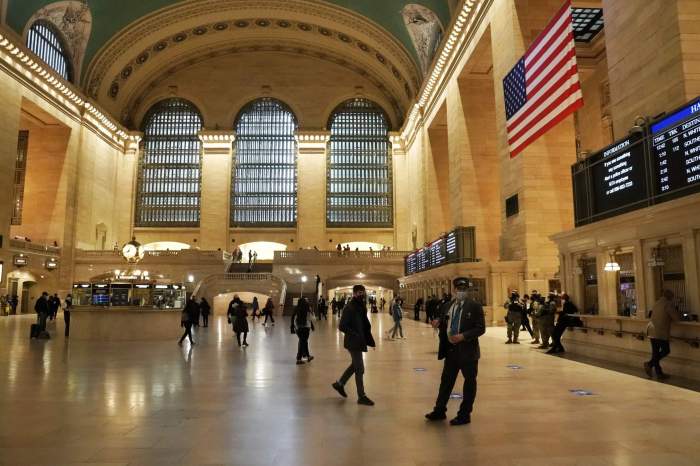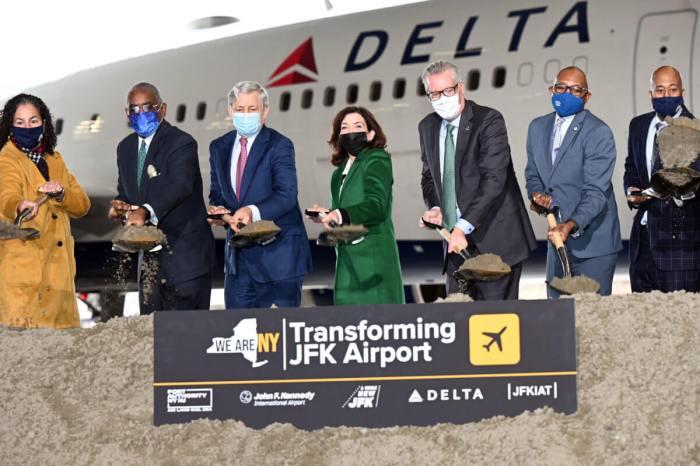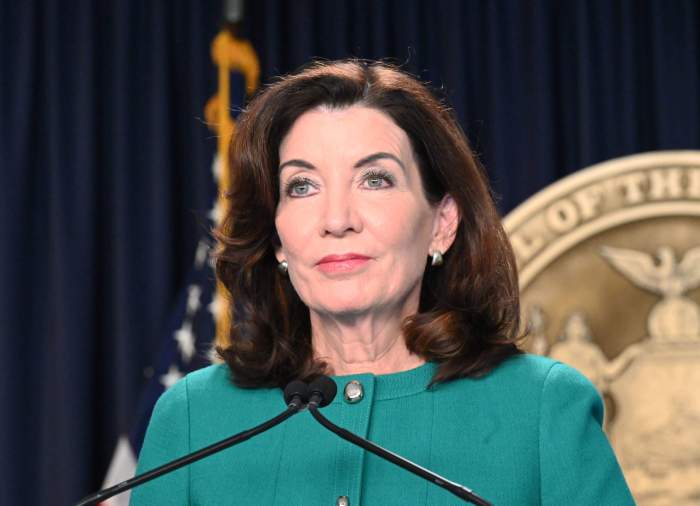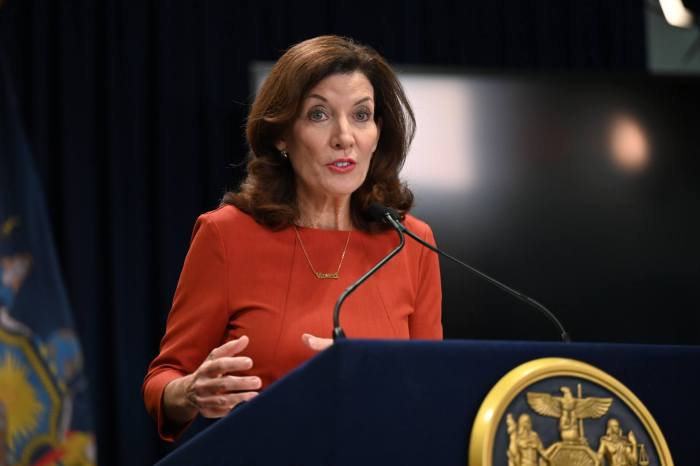Transit advocates and politicians rallied Monday calling on Mayor Eric Adams and Governor Kathy Hochul to improve New York City’s struggling bus system.
Big Apple buses have slowed down as car traffic returned to pre-COVID levels on city streets, and activists relaunched a six-year-old campaign dubbed the Bus Turnaround coalition to push the city and state leaders to speed up the sluggish people movers.
“New York’s millions of bus riders need our mayor and governor to do more and better than any who came before them,” said Riders Alliance organizer Jolyse Race in a statement on Feb. 28.
The organization, along with the Tri-State Transportation Campaign, Straphangers Campaign, and TransitCenter, revived their efforts from 2016 to update and improve the city’s bus system, which disproportionately serves poorer and predominantly Black and brown New Yorkers who don’t live near subways.
At the rally outside Brooklyn Borough Hall Monday, one politician noted that bus speeds increased earlier in the pandemic when the streets were clear of cars, giving New Yorkers a glimpse of what good service could look like.
“When they were freed up essential workers could get where they were going on time. You could see very briefly a vision of what it might be like if we had first class buses in New York City,” said city Comptroller Brad Lander.
Lander’s predecessor Scott Stringer found in 2017 that Gotham’s buses were the slowest of 17 big city networks in the country at just above 7.4 miles per hour on average.
Citywide average bus speeds returned to pre-pandemic levels in October of 7.9 mph, according to MTA, the same as they were for that month in 2019, and down from an increase to 8.3 mph in October 2020 when there were less cars on the roads.
The latest MTA data of vehicles driving over and through its bridges and tunnels, traffic has been above pre-pandemic levels six out of the most recent 12 days the agency counted.
A report published by the Bus Turnaround coalition Monday showed that dedicated busways and bus lanes the city has installed in recent years do in fact boost speeds along those stretches, but the buses remain slower at other parts of their routes where they still have to fend for space with private vehicles.
On the short Jay Street busway in Downtown Brooklyn, the B26 bus was 29% faster than pre-pandemic, but on the rest of the route its travel times remained the same.
Local Councilmember Lincoln Restler said he has stopped taking the bus due to its sluggish speeds, and said the city should improve the Jay Street busway, where illegal driving has returned since the city first restricted traffic in 2020.
“I’m going to be real with you all, I’ve pretty much stopped taking the bus,” said Restler. “It is faster to get on a bicycle and move around our streets than to get on a bus at this point.”
“We need a real busway on Jay Street,” the freshman pol added.
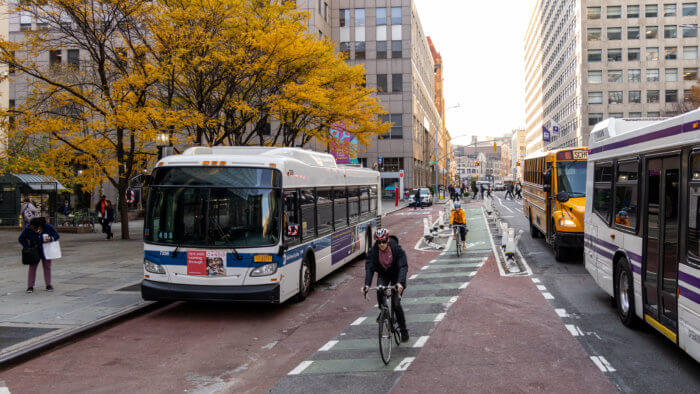
Along the much-praised 14th Street busway in Manhattan, the M14A bus was 65% times faster than in 2019, while its overall route saw a smaller increase in speeds of 32%.
The advocates laid out a host of recommendations for the city and state to improve bus service in their report.
They called on the state to increase the bus operating budget and on the city to dedicate more of its funding for bus projects like the red-painted bus lanes and busways.
By law, the city has to add at least 20 new miles of bus lanes this year, and Adams has promised to add 150 miles during his administration, but advocates noted that neither the mayor nor his Department of Transportation have yet to reveal specific plans.
“Right now the city has ambitious targets, but we have few specific plans or concrete resources to achieve those targets,” said Tabitha Decker, deputy executive director of TransitCenter. “City Hall needs to go big and fund a rapid expansion of high quality bus lanes so that riders are no longer stuck in traffic.”
DOT did not provide any specific plans, but Commissioner Ydanis Rodriguez said in a statement that he is committed to the mayor’s milestones.
“Our bus system serves so many working-class and immigrant communities, and they deserve high-quality public transportation service just like every New Yorker,” Rodriguez said in a statement. “We have worked closely with the MTA, advocates, and community residents to significantly improve bus speeds, but there is much more work to do – that’s why Mayor Adams and I have a bold plan to create 150 miles of new busways and bus lanes across the city, speeding up buses and reducing wait times for New Yorkers.”
The Metropolitan Transportation Authority must also finally allow back-door boarding on its local buses, advocates said, but an MTA pilot on select routes has been stuck in neutral for more than six months even though the agency already has the needed OMNY readers on board its entire fleet.
An MTA spokesman declined to say when they plan to implement all-door boarding, reiterating that officials still have to zero in on specific routes for testing.
“The MTA is working on determining the routes that could be a part of the pilot. Route selection is important and the MTA wants to get it right,” said Aaron Donovan.
Transit officials should also deploy more cameras on buses to catch scofflaws hogging the red-painted bus lanes, the report said.
The MTA has followed through on some of the coalition’s demands from 2016, including redesigning its ancient bus networks on a borough-by-borough basis, and the agency’s chief said buses are a key focus for him.
“Improving bus service is a key component of the MTA’s commitment to transit equity. The bus network serves all New Yorkers,” said Janno Lieber in a statement. “It is especially critical to those who live farther from the subway, and bus riders tend to be from New York’s economically disadvantaged communities.”
The Authority is set to implement sweeping changes to the Bronx’s bus network this June and plans to release a revised draft plan for Queens by the end of next month.
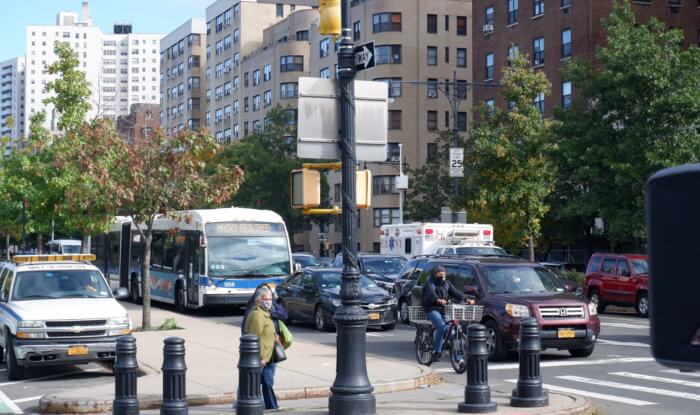
Queens Borough President Donovan Richards said changes are well overdue for his borough — the city’s largest by area — where he said transit trips can take longer than a domestic flight!
“In southern Queens, we can attest it’s sometime quicker to get from JFK Airport to Florida by plane than it is to get from Rosedale to lower Manhattan by train,” the elected official said.
“Each day we delay in implementing the changes means more pollution will be emitted, more traffic jams will be created, and more hardworking people will be forced to waste time while waiting for buses,” he added.



